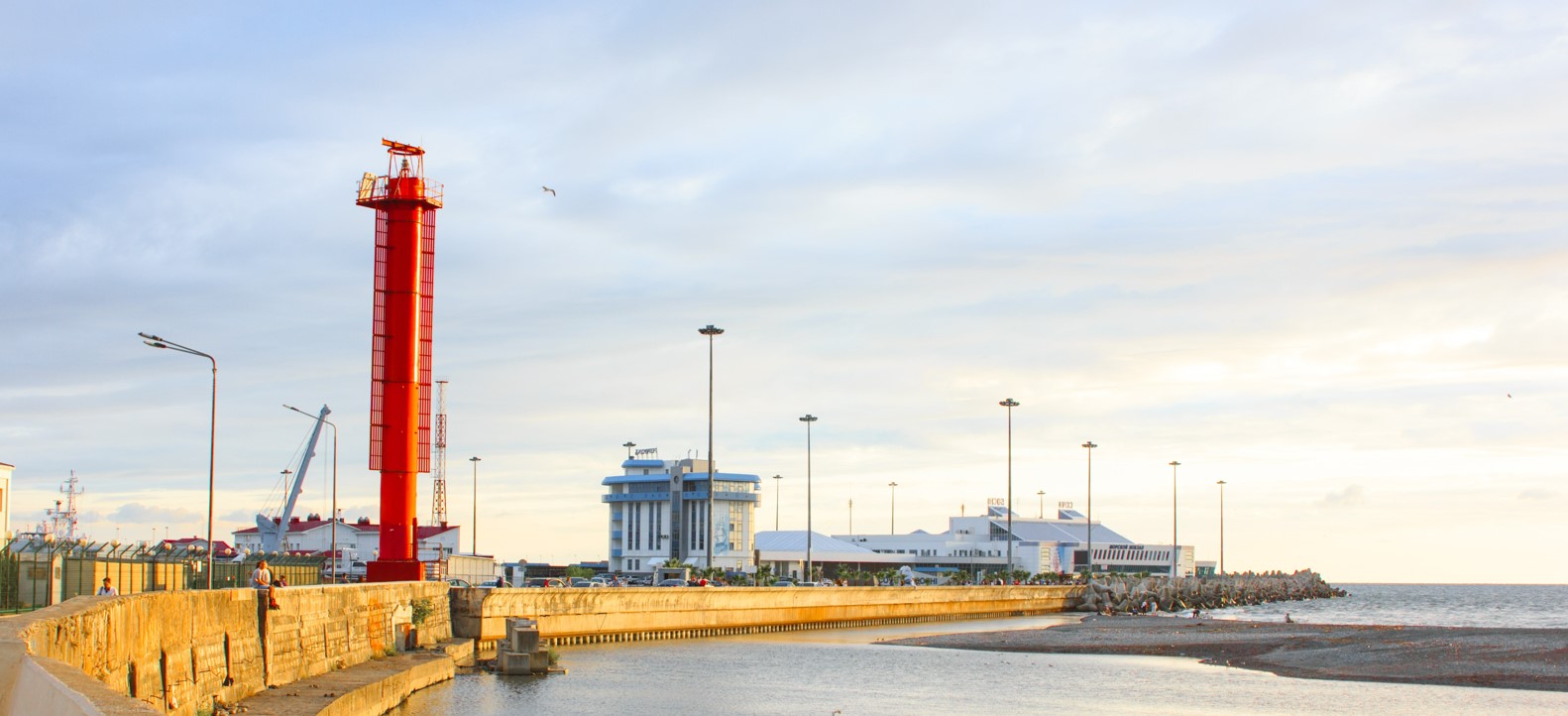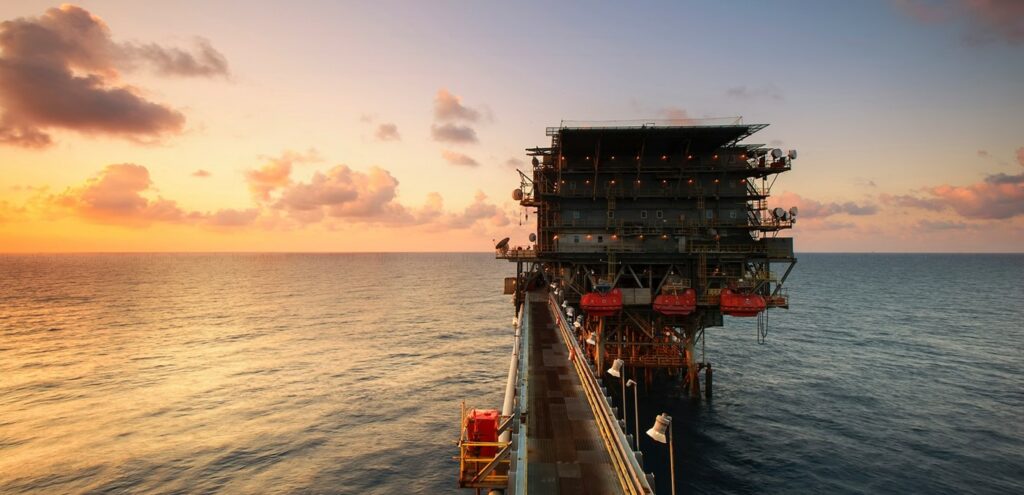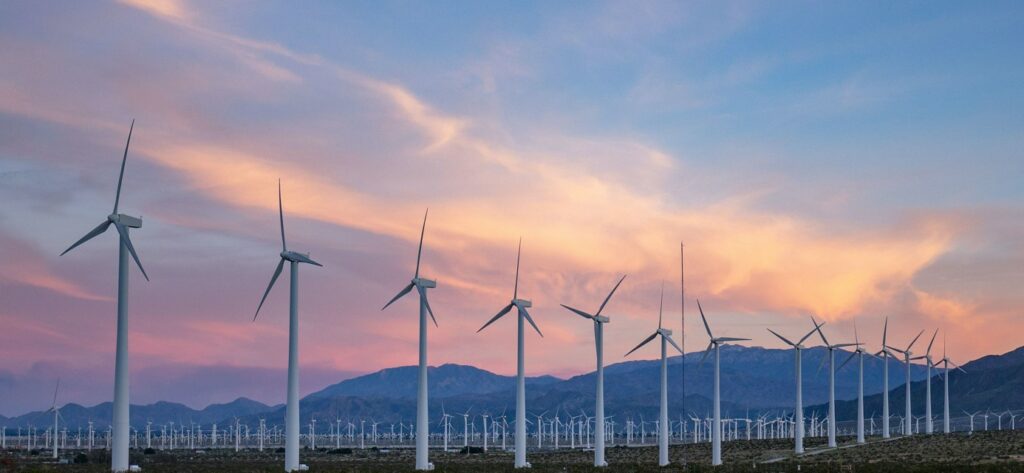
Do We Really Want to Make Canadians Poorer?
What shutting down its oil and gas sector would cost CanadaBy Don Wright
While Canada must shoulder its fair share of the burden of the global need to decarbonize, it is important we do so with a full understanding of the repercussions of different policy choices.
This is important for two reasons. First, properly costing the various options to decarbonize should inform which routes to pursue – presumably those that minimize overall costs and disruptions while reducing GHG emissions. Second, if public support for decarbonization is to be maintained over the multiple decades during which a grand decarbonization project will unfold, it is essential governments are as candid as possible about the impacts this will entail.
With respect to this second point, there is a risk of overpromising and underdelivering when so much of the public discourse tends to talk about decarbonization as an opportunity and not as an obligation.[1] If Canadians come to feel they were sold a Pollyannish view of what decarbonization will entail, it is highly likely, when financial and transitional costs become apparent, that trust in government will further erode and support for climate action, which is currently very strong, will be vulnerable to a significant collapse.
In this paper, I will address the argument that Canada could sunset its oil and gas industry without sustaining significant economic and social costs. My conclusion is that this argument is very wrong – that the costs to Canada would be significant, and that a strategy of aggressive decarbonization over an accelerated phase out of fossil fuels, as put forward in Public Policy Forum’s “Leadership Blueprint for Canada’s Net-Energy Transition” is superior.

Canada’s Natural Resource Industries Are Still Critical to Our Standard of Living
Forty years ago, I wrote my economics dissertation on why Canada’s exports were predominantly natural resource-based products, why its manufacturing sector was predominantly focused on the domestic market and why that sector was primarily a “branch plant” one.
In a world with significant barriers to trade in manufactured goods, this economic structure afforded the highest wage potential to Canadian workers. Manufacturers of non-resource-based manufacturing pursuing an export orientation would be hard pressed to pay workers competitive wages, cover the “tax” imposed by foreign trade barriers and be competitive in those markets.[2]
While it is true that tariff barriers have been reduced significantly over the past 40 years – the Canada-US FTA/NAFTA/CUSMA, several rounds of GATT/ World Trade Organization negotiations, and all of that – and services make up a larger portion of trade, it is a mistake to think there are not still significant border effects that put smaller economies at a disadvantage relative to larger economies. These border effects include government procurement policies (Buy America anybody?), trade remedy laws and agglomeration economies/gravity effects that advantage suppliers located in the larger economies.
The key point is that a country’s standard of living is primarily determined by the wages and the taxes its trade-exposed sectors can afford to pay.
A country blessed with a rich endowment of natural resources relative to its population will enjoy a higher standard of living if it orients its economy to exploit those natural resources as the base of its export sector.
Despite the perennial complaint about being “mere hewers of wood and drawers of water,” the reality is that this is how our economy provided Canadians with the highest possible standard of living – one of the highest in the world. It would be better to add more value to our resources, but their true power lies in exporting them in whatever form.
Being a rational people, this is what Canadian policy has encouraged and business practice has pursued – right up to the present (see graph below).
Canada Net Exports by Sector, 2021
(nominal $billions)
| Energy | 102.7 |
| Mining | 28.1 |
| Forest & Paper | 24.6 |
| Agriculture | 23.7 |
| Travel | 6.8 |
| Aircraft & Parts | 4.3 |
| Other | -7.7 |
| Service excluding Travel | -9.0 |
| Chemicals and Plastics | -12.8 |
| Vehicles & Parts | -23.1 |
| Machinery and Equipment | -30.9 |
| Electronic Equipment | -47.2 |
| Consumer Goods | -57.1 |
We could have decided to leave our natural resources in the ground and instead built an economy based on exporting goods and services not tied to our endowment of natural resources. We could – and to some extent do – walk and chew gum at the same time. But to suppress our natural comparative advantage would have come at the cost of significantly lower real wages and higher taxes (to make up for the foregone government revenue generated from resource rents).[3]
To many, this will seem like torturing the obvious. Yet, the view among Canadian opinion leaders and policy makers increasingly leans to sunsetting our resource industries, in particular Canada’s oil and gas sector. The motivation is often well-intentioned. It is also ill-informed – and could lead to catastrophic outcomes while undermining the primary objective of reducing carbon emissions to net zero.

Prematurely Sunsetting Canada’s Oil and Gas Sector
What do I mean by “prematurely sunsetting” our oil and gas industry? Basically, it means constraining production while world demand for oil and gas remains strong enough and the international price for oil remains high enough that Canadian producers can continue to profitably sell their output against alternative suppliers. These production constraints tend to be indirect and take the forms of opposing pipeline development, frustrating regulatory approval and permitting through endless legal processes, and restricting access to capital.
All this even though plausible paths to net zero show that global oil and gas demand will remain considerably higher than Canada’s projected output for the foreseeable future.[4] Is there any rational reason for Canada to voluntarily cede the economic benefits of meeting this global demand to other jurisdictions? For context on that question, note the table below, which shows the top 10 oil exporters in the world. Consider whether these countries would exit the field, or would they rather seek to fill the gap left by Canada’s withdrawal.
| Country | Oil Exports (bbl/day) |
| Saudi Arabia | 6.7 |
| Russia | 4.7 |
| Iraq | 3.4 |
| Canada | 3.0 |
| Iran | 2.7 |
| United Arab Emirates | 2.4 |
| Nigeria | 1.9 |
| Kuwait | 1.8 |
| Norway | 1.5 |
| Kazakhstan | 1.4 |
In this list, the closest country to a Canadian peer is Norway. However, Norway has no intention of abandoning the economic benefits of oil and gas production to other jurisdictions – witness this statement by a representative of Equinor, the county’s state-owned oil company:
“Our plan, basically, is to make sure that the Norwegian continental shelf has the last drops, the last molecules, the last barrels to survive in that competition.”[5]
There is also the often-cited argument that Canadian oil and gas will not be able to compete in a low demand scenario in any case. But do the facts back that up?
The bulk of Canada’s oil output comes from the oil sands, where the high fixed costs of capital-intensive facilities are already in place. The marginal costs of running these plants on the back end of their projected lives are relatively low.[6]
Conventional oil plays, on the other hand, require ongoing investments in exploration and development. If the march to net zero, the ESG impact on oil companies and the increasing demands of investors to return money to shareholders all stick, those exploration and development expenditures, particularly for new long-cycle projects that make up for depleted production, will be constrained by the marketplace. Ironically, this confluence of anti-investment factors leads to a sort of “legalized cartel,” in that it would restrict production and hold prices aloft. As one analyst puts it “the fear of peak demand is leading to the reality of peak supply.”[7]
For this reason, oil and gas prices rose steadily over 2021 – well before Russia invaded Ukraine. As demand revived after the COVID-19 lockdowns, prices were driven upward by the policy and market-induced squeeze on investment to replace reserves in the post-2014 period. If this “capital embargo” continues, prices will remain high for the foreseeable future.
The explosive rise in the European price for natural gas in 2021 – the Dutch Title Transfer Facility price, known as TTF, rose more than 350 per cent over the year – points to a serious flaw in the notion that solar and wind power are ready to become the dominant replacement for fossil fuels. When wind speeds were lower than normal for extended periods of time in 2021, resulting in a significant reduction in the amount of wind power generated, utilities had to scramble for more coal and natural gas (the price of coal shot up as well).[8]
There are real questions about whether full-scale replacement of fossil fuels by solar and wind power is feasible with currently foreseeable technologies.
The intermittency problem, coupled with the very high costs of storage solutions, means that the low “levelized costs” touted for wind and solar are misleading. To be properly costed, these numbers must be paired with realistic estimates of the volume of storage required and the cost of that storage.
Nor has the considerable land and materials footprint of electrification based predominantly on wind and solar been given sufficient due diligence in terms of their economic, environmental and political costs. While these are worthy of investigation, the point of this paper is not to provide a full audit of all questions. I include them to suggest there are additional reasons to be skeptical of the commonly asserted proposition that such alternatives will crash global demand for fossil fuels over the next three decades.[9] Let’s give the final word to Canadian scientist and policy analyst Vaclav Smil, arguably the world’s foremost expert on energy transitions:
In conclusion, the verdict – based on the history of past energy transitions, on the unprecedented scales of the unfolding shift, on the limits of alternative pathways, and on the enormous and immediate energy needs of billions of people in low-income countries – is clear. Designing hypothetical roadmaps outlining complete elimination of fossil carbon from the global energy supply by 2050 is nothing but an exercise in wishful thinking that ignores fundamental physical realities. And it is no less unrealistic to propose legislation, as has been done in the U.S. Congress, claiming that such a shift can be accomplished in the U.S. by 2030. Such claims are simply too extreme to be defended as aspirational. The complete decarbonization of the global energy supply will be an extremely challenging undertaking of an unprecedented scale and complexity that will not be accomplished – even in the case of sustained, dedicated and extraordinarily costly commitment – in a matter of a few decades.[10]

Estimating the Cost of Prematurely Sunsetting the Canadian Oil and Gas Sector
In its 2021 report, the Canadian Energy Regulator offered two scenarios for projected production through 2050 – the “Current Policies Scenario” and the “Evolving Policies Scenario.”[11] These scenarios are summarized in the table below and compared to 2019 production.
Canada Projected Oil and Natural Gas Production
| Scenario | 2019 | 2035 | 2050 |
| Current Policies | |||
| – Oil (mbpd) | 4.9 | 6.6 | 6.6 |
| – Natural Gas (bcfpd) | 15.7 | 17.9 | 22.2 |
| Evolving Policies | |||
| – Oil (mbpd) | 4.9 | 5.7 | 4.7 |
| – Natural Gas (bcfpd) | 15.7 | 15.1 | 13.1 |
A premature sunsetting of the industry would involve purposely constraining production toward zero while demand for the production of oil and gas remains robust.
For simplicity, I use 2019 production levels as the base for my calculations. The timeframe of this sunsetting is not significant for the purposes of this exercise. Whether that happens over five years or 25 years, or somewhere in between, the relative reduction in potential Canadian income and wealth would be the same.[12]
How to measure this cost?
To get an order-of-magnitude answer to this question, I conducted a “counterfactual thought experiment” to estimate what Canada’s GDP would be if there were no Alberta oil and gas sector. I then extrapolated to account for the oil and gas sector in other provinces.[13]
As shown in the table below, the benefits of selling oil and gas to the rest of the world depends on the price Canada receives for oil and gas. I have used the price of West Texas Intermediate (WTI) oil in constant 2021 U.S. dollars as the basis for four scenarios.
Estimated Reduction in Real GDP of Eliminating Canada’s Oil and Gas Sector
| WTI Price Scenario (US$ 2021/bbl) | Estimated Reduction in Alberta GDP | Estimated Reduction in Canada GDP |
| 40 | -25.8% | -5.1% |
| 60 | -29.5% | -6.1% |
| 80 | -32.9% | -7.1% |
| 100 | -36.0% | -8.0% |
Similar order of magnitude impacts would be seen in both Saskatchewan and Newfoundland and Labrador, the former slightly less and the latter slightly more, given the relative importance of the oil and gas sectors to their respective economies.
Looking ahead, for the investment-suppression reasons outlined above, it is more likely that oil prices will trend above than below the midpoint of the US$40-100/bbl range. But, for the purposes of this discussion, let’s take a six per cent reduction, which would correspond to a price of slightly less than US$60/bbl,[14] as a conservative estimate of what it would cost Canada to prematurely shut down its oil and gas sector.

Only Six Per Cent?
Some may want to dismiss a six per cent reduction in GDP as not that important, and a reasonable price to pay for Canada to take a leading role in the global march to net zero. That is a choice, but before making it, let’s put that choice in perspective.
If an employer came to the collective bargaining table and suggested that a six per cent reduction in real pay levels was a reasonable request to make of its workers, what would be the likely reaction of the workers and their union? This is, in essence, what we would be asking of Canadians – a six per cent reduction in real incomes.
Elsewhere, I have lamented Canada’s poor performance in growing the standard of living of Canadians over the past 45 years.[15] Canada’s performance in growing our GDP per capita – the basis of increases in Canada’s standard of living – has been anemic, to say the least. Nor has it been getting better over the past decade – over the last 10 years, the average real growth rate has been 0.39 per cent. At that rate, it would take 15 years to make up for a six per cent loss. So, “only six per cent” could mean 15 years of lost growth at current rates.
Canadian GDP was $2.5 trillion in 2019; thus, a loss of six per cent would amount to $150 billion. The arithmetic therefore tells us that we could spend more than $700/tonne of GHGs to get the oil and gas sector to net zero, and we would still be better off than if we were to shut down the oil and gas sector. In a recent study, Royal Bank of Canada estimated that Canada could eliminate 92 million tonnes of the industry’s emissions at an average cost of approximately for $13.7 billion annually – an abatement cost of $150/tonne.[16] While marginal abatement costs will rise as the least costly solutions are used first, this still leaves us conceptually with $136 billion to eliminate the last 110 or so million tonnes before decarbonization becomes more expensive than phasing out production.
This Six Per Cent Loss Would Ripple Through Canada in a Variety of Ways:
1. The Regional Impact
The estimated loss of six per cent is a Canada-wide estimate. The loss in the major oil and gas producing provinces will be much more severe. The estimate for Alberta is 29.1 per cent.
This number for Alberta may well be a conservative estimate of the impact on the province.
The disruption in Alberta would go far beyond the loss of direct employment in the oil and gas sector.
Jobs in indirect and induced industries engendered by the oil and gas sector would also be affected. In addition, the significantly reduced fiscal capacity of the provincial government would lead to lower public sector expenditures and/or higher tax rates – both of which would lead to lower economic activity in Alberta.
The table below compares the population numbers in 1936 and 2021 for Manitoba, Alberta and “Alberta-but-for-oil-and-gas.” The latter estimate is a simple calculation – it assumes the Alberta/Manitoba population ratio would have remained constant between 1936 and 2019 but for oil and gas.
| 1936 (thousands) | 2019 (thousands) | |
| Manitoba | 711 | 1,384 |
| Alberta | 773 | 4,443 |
| Alberta-but-for-oil-and-gas | 773 | 1,504 |
This comparison is not meant to be precisely accurate, but rather to give a sense of the order-of-magnitude of the displacement that is likely to happen. The Rocky Mountains are lovely, but, in the absence of oil and gas, is there any reason to believe that Alberta’s population would have grown at a significantly greater rate than Manitoba’s? It is difficult to imagine how Alberta could support those extra 2.9 million people in the absence of oil and gas without a huge reduction in real income levels.
There would likely be significant out migration from Alberta as people moved to other provinces in search of better employment opportunities. Similar effects would be felt by Saskatchewan – proportionately somewhat less than Alberta – and Newfoundland and Labrador – proportionately somewhat more than Alberta.
2. The Impact on Other Provinces
Significant out migration from the oil-producing provinces would mean more competition for jobs and housing in the centres where significant numbers move – probably disproportionately to large metropolitan areas in English-speaking Canada. This, in turn, would mean more competition among workers in the labour market, as well as increased competition for scarce real estate. The upshot: lower real wages and higher housing costs in parts of Canada that may think they have a minimal connection to the health of the oil and gas sector.
3. The Fiscal Impact on the Federal Government
‘Finances of the Nation’ assembles public Canadian public finance data, analysis and commentary. It provides a useful resource on the distribution of federal revenue and spending across the provinces and territories.[17] The table below compares revenue, expenditure and net balance for Alberta and Manitoba in 2002 (the year with lowest real price of oil since 2000), 2008 (the year with the highest real price of oil since 2000) and 2019 (the most recent pre-pandemic year). A negative balance means the federal government spends more in a province than it collects from that province.
Federal Per Capita Fiscal Balance – Nominal $
| 2002 | 2008 | 2019 | |
| Alberta | |||
| – Revenue | 8,505 | 13,508 | 13,346 |
| – Expenditure | 5,307 | 6,218 | 8,644 |
| – Balance | 3,198 | 7,290 | 4,702 |
| Manitoba | |||
| – Revenue | 5,811 | 7,304 | 9,637 |
| – Expenditure | 8,396 | 10,711 | 13,025 |
| – Balance | -2,584 | -3,467 | -3,388 |
| Net Difference between Alberta and Manitoba | 5,782 | 10,757 | 8,090 |
Note the significant difference between Alberta in each of those years. The difference reflects both higher per capita federal expenditures and lower per capita federal revenues in Manitoba. This is as it should be. Federal government fiscal policy that equalizes opportunities across the country is an accepted part of the Canadian social contract and the requirement to provide equalization payments to “have not” provinces was explicitly added to the constitution in the 1982 patriation exercise.
But if there is no Alberta oil and gas sector, there is no reason to believe that Alberta’s per capita balance would be significantly different than Manitoba’s – i.e., it would move from being a “have” province to being a “have not” province.
Saskatchewan is also currently a “have” province. Newfoundland and Labrador’s per capita draw on the federal government is significantly less than that of the other Atlantic provinces. This would change if Saskatchewan and Newfoundland and Labrador lost their oil and gas sectors.
The table below shows my calculations of the impact on the federal fiscal balance if Alberta, shorn of its main resources, had the identical federal per capita expenditures and revenue as Manitoba. I added similar calculations for Saskatchewan and Newfoundland and Labrador to estimate the impact of no oil and gas sector in all three provinces. To give a sense of the magnitude of this impact, I also included what percentage of that year’s federal revenues the impact would represent.
Estimated Change in Federal Fiscal Balance If There Were No Oil and Gas Sectors in Alberta, Saskatchewan and Newfoundland and Labrador, Nominal $millions
| 2002 | 2008 | 2019 | |
| Alberta only | -18,089 | -38,681 | -35,293 |
| % Of Federal Revenue | -9.5% | -16.4% | -10.6% |
| Alberta, Saskatchewan and Newfoundland and Labrador | -19,418 | -43,646 | -42,277 |
| % Of Federal Revenue | -10.2% | -18.5% | -12.7% |
A loss of $19 billion here, $44 billion there, and soon, as a U.S. politician once said, you’re talking about real money! And real impacts on the capacity of government to provide services Canadians depend on.
How would the federal government deal with such a shortfall? Probably through a combination of higher taxes and lower spending. The most likely target for spending reductions? Undoubtedly, as with the deficit slashing 1995 federal budget, fiscal transfers to the provinces, this time likely including equalization.
All provinces have a significant stake in a healthy oil and gas industry.

The “Building-Dams-With-Spoons Fallacy”
Proponents of an accelerated phase out argue that such calculations fail to consider all the opportunities the energy transition will offer – that green energy will generate more jobs than oil and gas does, and that all kinds of new investment opportunities will be created.[18]
This is a perfect example of what I will call the “building-dams-with-spoons fallacy.” There is a story – there are various versions of this ‘story’ – of an economist who visits Mao-era China. He sees hundreds of workers building a dam with shovels. He asks “Why don’t they use a mechanical digger?” “That would put people out of work,” replies the foreman. “Oh,” says the economist, “I thought you were making a dam. If it’s jobs you want, take away their shovels and give them spoons.”
In the production of energy, the objectives are low cost, reliability and low direct and indirect GHGs. There are currently trade-offs among those three objectives. Employing as many workers and as much capital as possible is not an objective. That makes energy more expensive. We do not make ourselves richer by making important services more expensive.
The astonishing enhancement over the past 250 years of the global standard of living and all the human flourishing that has been engendered by it – not the least of which is the increase in average life expectancy from 29 years in 1770 to 73 years in 2019[19] – is the result of doing more with less, not doing less with more.
If green energy requires more workers and capital than are currently employed in the oil and gas sector, those resources will need to be taken away from other activities. In sum, the total value of the goods and services produced in Canada will go down.
One may call $2 trillion in spending an investment if one wants. That does not mean it isn’t a cost. One may argue that it is a necessary cost. But it still must be paid by somebody – and it would be paid by Canadians through a combination of higher energy costs, higher taxes and lower real incomes.
In 2021, Canada exported $122 billion worth of oil, gas and refined petroleum products. If we eliminated our oil and gas sector, but wanted to maintain our consumption of goods and services not produced in Canada – iPhones, computers, Teslas, bananas, French wine and cheeses, vacations on warm beaches, etc. – several times the number of workers that had previously worked in the oil and gas sector would have to be redirected from producing for the domestic market to producing $122 billion worth of goods and services for the export market.
The reason several times the number of workers would be required reflects the fact that the value of the output generated in the oil and gas sector per worker is so much greater than the equivalent value in other sectors. The resulting reduction in domestic consumption would be matched by a reduction in real wages for the average worker and a reduction in government revenue.
Canadians would consume less, earn less and probably see their taxes go up. In short, a significant reduction in their standard of living. This would be an unavoidable outcome of deciding to not take advantage of the comparative advantage provided by a valuable natural resource.

Concluding Comments
Climate change and the need to decarbonize the global economy is a daunting challenge, to say the least. There are significant challenges in physics, economics, engineering and sourcing the materials needed (e.g., a lot more mining). There will be environmental and political challenges – will society accept the widespread placement of solar panels, wind turbines and transmission lines over much of the landscape? Then there are the challenges in transforming the entire energy system highlighted by Canada’s international energy transition authority Vaclav Smil.
But most daunting of all is the “collective action problem” facing all countries of the world. Essential as it is, given the costs of climate change, decarbonization is not the only challenge governments must grapple with.
Public resources devoted to decarbonization mean fewer available dollars for combatting poverty, improving health care, maintaining security in an uncertain world and many other critical concerns. Any one country acting on its own will find that it bears significant opportunity costs without seeing substantial benefits.
Every country will be tempted to be a “free rider” when it comes to decarbonization.
The United Nations Framework Convention on Climate Change Conference of the Parties (COP) process – most recently on display at Glasgow last year – is supposed to be the mechanism to overcome the collective action problem. But it comes without an enforcement mechanism, and a review of the last 30 years seems to suggest that there has been a whole lot of “extend and pretend” at work to date.
Everybody wants to be perceived as a “leader,” not least Canada. But leaders should check over their shoulders every so often to make sure they have followers. Notwithstanding Glasgow, we should be worried about where the rest of the world is going.
Germany’s Energiewende was in serious difficulty before the Russian invasion of Ukraine. Joe Biden’s Build Back Better appears to be stillborn, and we have witnessed the strange spectacle of the U.S. president begging OPEC to increase oil production – again, this began before the Russian invasion of Ukraine. Post-invasion we have seen Biden promise to supply Europe with an additional 15 billion cubic metres of liquified natural gas (LNG) this year, rising to 50 billion cubic metres by 2030. The United Kingdom appears to be having serious buyer’s remorse on its plans to have all homeowners give up natural gas heating for their homes. India’s commitment to net zero is equivocal and conditional on implausible transfers from developed countries. China’s new five-year plan shows a continuing growth in coal power generation.
This is not an argument for standing still. Rather, it is a caution to approach decarbonization in an unsentimental, ego-free way. It means paying attention to what other countries are doing, as opposed to what they say they are doing. Above all, it means maintaining our ability to generate growing per capita income to provide a rising standard of living for all Canadians, and to finance all our important objectives – reconciliation with Canada’s Indigenous Peoples, better healthcare and more affordable childcare, to name a few. And to finance adaptation to climate change, which, regardless of how successful Canada and the rest of the world will be in decarbonizing, is already happening and will continue to unfold.
We should continue with much of our current approach. A steadily increasing price for carbon is important for signalling to businesses and households that they should step up their game in looking for lower carbon alternatives.[20] We should continue focusing on reducing emissions wherever they are generated, and not think we have an accurate enough sense of the future that we can decide which industries we should sunset.
If we can materially reduce emissions of our oil and gas sector while it still generates significant economic benefits, why would we want to prematurely sunset it?
The argument that we would be “enabling” a continuing reliance on global fossil fuel use by continuing to export Canadian oil and gas can most charitably be described as naïve. Go back and look at that list of the top 10 oil exporters at the beginning of this paper. Which one of those countries would not be willing to fill any gap in supply created by Canada vacating the field?
I am hopeful that a shift in thinking along these lines is beginning to happen. The federal government, to its credit, is focusing on reducing emissions, not output levels, in its latest climate action strategy. Several large public pension funds, including the Canada Pension Plan, have explicitly rejected divestment in favour of working with high emitting companies to decarbonize.
The Globe and Mail has demonstrated an interesting shift in opinion. In an editorial from December of last year, the paper lamented that the National Energy Regulator projected that Canadian oil output in 2050 “will still be 4.8 million barrels a day, barely lower than today.” Compare that with an editorial in May of this year, which stated “as long as there is so much demand for Canadian oil, notably from the U.S., there is no economic or environmental logic in trying to artificially restrict Canadian oil production. The only result would be less money flowing into Canada, and more going to every other country with oil reserves.” The Globe and Mail also stresses the importance of lowering emissions in the oil and gas sector – a key point of agreement.
Still, there continues to be pressure from many quarters to prematurely sunset Canada’s oil and gas sector.
The world will kick its oil and gas habit only when the all-in costs of alternatives are not significantly more expensive and significantly less reliable than fossil fuels. In the meantime, let’s focus on producing the oil and gas with the lowest GHG-intensity in the world. That is the only route to get aggressive decarbonization, which is also economically, socially and politically sustainable.
This brings me to a key point I made at the beginning of this paper. A country’s standard of living is primarily determined by the wages and net government revenue emanating from its trade-exposed sectors.
Because of the inherent value of Canada’s oil and gas, that sector can afford to pay higher wages and generate higher net government revenue than any other sector can. We should be cautious in deciding that we want to kiss all that goodbye.
- As just one example, here is a quote that is typical of the genre: “Far from harming Canada’s economy, the low-carbon transformation will bring massive economic benefits to Canadian households. Royal Bank of Canada recently estimated that $2 trillion in spending will be required to achieve net-zero emissions by 2050. That equates to massive investment, and consequent growth in good-paying jobs for Canadians across the country.” Source: https://cleanprosperity.ca/new-pbo-report-presents-misleading-picture-of-carbon-pricing/ ↑
- The only notable exception to this was the auto trade. But that exception underlined the basic thesis – it required the United States and Canada to remove the barriers to trade in autos and auto parts before Canadian plants could export significant portions of their output to the United States. I also looked at the situation where intangible assets are a significant component of the typical company’s competitiveness. In that case, the same basic conclusion applied – it will be very difficult for a Canadian-based company to develop its intangible assets and export to the rest of the world when there are barriers to trade in the goods and services which embody significant intangible assets. ↑
- While this alternative may have been theoretically possible, one could question whether it would have been practically possible. Could Canadian governments have survived politically if the Canadian standard of living was even lower relative to that of the United States than it has historically been? Could Canada have remained independent under that scenario? ↑
- The International Energy Agency, for example, projects that under “the current stated policies scenario,” world demand for oil will be more than 100 million barrels per day through 2050. Under the “announced pledges scenario” (essentially the pledges made at the Glasgow climate change summit) world demand would be approximately 84 million barrels per day. Under the “net-zero scenario” world demand would be 24 million barrels per day. Canada’s 2019 oil production was approximately 4.9 million barrels per day. https://iea.blob.core.windows.net/assets/4ed140c1-c3f3-4fd9-acae-789a4e14a23c/WorldEnergyOutlook2021.pdf ↑
- https://www.bloomberg.com/news/articles/2021-12-20/equinor-wants-the-world-s-last-drop-of-oil-to-come-from-norway. It should also be noted that Equinor has just secured approval to develop a new oil field off the coast of Newfoundland and Labrador. ↑
- A point made by the Canadian Energy Regulator in its 2021 outlook: https://www.cer-rec.gc.ca/en/data-analysis/canada-energy-future/2021/canada-energy-futures-2021.pdf p.12. ↑
- https://financialpost.com/commodities/energy/oil-gas/eric-nuttall-this-oil-party-has-just-begun. ↑
- https://www.reuters.com/markets/commodities/weak-winds-worsened-europes-power-crunch-utilities-need-better-storage-2021-12-22/↑
- Given the shortcomings of intermittent wind and solar power, the only currently available technology which can be used to cost-effectively decarbonize is nuclear energy. Ironically, many of those that are most concerned about decarbonizing are also opposed to nuclear. This may be changing, and it is worth noting that the Canadian government seems to have rediscovered the value of nuclear, but it is still early days in that journey. ↑
- https://www.schoolofpublicpolicy.sk.ca/research/publications/policy-brief/what-we-need-to-know-about-the-pace-of-decarbonization.php . See also his latest book How the World Really Works. ↑
- The Current Policies Scenario assumes limited action to reduce GHGs beyond policies in place today. The Evolving Policies Scenario presumes that action to reduce GHG emissions from our energy system continues to increase at a pace similar to recent history, in both Canada and the world. https://www.cer-rec.gc.ca/en/data-analysis/canada-energy-future/2021/executive-summary.html ↑
- Certainly, the disruptions and adjustment costs will be greater the quicker the phase out happens, but the loss of potential income and wealth will remain the same. ↑
- The short description of my “experiment” is as follows. I used Statscan data to show that, pre-oil and gas, the GDP per capita of Alberta and Manitoba were virtually identical. In the absence of oil and gas then, it is reasonable to conjecture that Alberta’s current GDP per capita would be equivalent to the current number for Manitoba. I then calculated the implications of this for Alberta’s and Canada’s GDP. Finally, I extrapolated that to estimate the impact of no oil and gas sector in the rest of Canada – principally in Newfoundland and Labrador, Saskatchewan and British Columbia. Those interested in the minutiae of this exercise are invited to contact me. ↑
- At the time of writing this paper (May 23, 2022) the price was US$110/bbl; a month before the Russian invasion of Ukraine it was US$82/bbl; for all of 2021 it averaged US$68/bbl. ↑
- https://ppforum.ca/publications/don-wright-middle-class/ ↑
- https://thoughtleadership.rbc.com/the-2-trillion-transition/ ↑
- https://financesofthenation.ca/federal-fiscal-balances/ ↑
- Refer back to the quote in Footnote 1. ↑
- https://ourworldindata.org/life-expectancy ↑
- Though it is also important to be mindful of the challenges of emissions intense trade exposed industries (EITEs). The free rider problem raises its head again – we are not helping with global decarbonization if our industries shut down while the market remains supplied by other countries with a lower or zero price on carbon. We should be careful about letting our effective price on carbon greatly exceed that of our major trading partners and competitors. ↑





